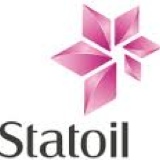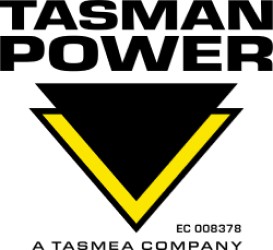Title Page
Equipment Owner Information
-
Company
-
Phone Number
-
Email Address
Equipment Information
-
Make
-
Model
-
ID / Call Sign
-
Registration Number
-
Serial Number / VIN
Inspector Information
-
Name
-
Company
-
Date of Inspection
System Checks
Multiple Inspection Template Checks
-
Typically small transportable buildings utilised in operations relate to Class 5 (occupied work spaces that are not accommodation units) and Class 6 (eating room) as per National Construction Code (NCC) – Part A3.
-
Are there any electrical circuits above Extra Low Voltage (50V AC or 120V DC)?
-
Confirm a valid Electrical Equipment inspection exists and is uploaded into the iAuditor database.
-
The Electrical Equipment Inspection can be completed before / after this inspection, and by another Authorised Inspection Station, but evidence will need to be sighted in iAuditor, or provided by the Equipment Owner, before selecting "Complete" and fully passing the equipment.
-
Is the asset fitted with wheels and design to be towed by a vehicle?
-
Confirm a valid Trailer inspection exists and is uploaded into the iAuditor database.
-
The Trailer Inspection can be completed before / after this inspection, and by another Authorised Inspection Station, but evidence will need to be sighted in iAuditor, or provided by the Equipment Owner, before selecting "Complete" and fully passing the equipment.
-
Is there a generator permanently attached to the building?
-
Confirm a valid Transportable Diesel Welder / Generator / Lighting Tower inspection exists and is uploaded into the iAuditor database.
-
The Generator Inspection can be completed before / after this inspection, and by another Authorised Inspection Station, but evidence will need to be sighted in iAuditor, or provided by the Equipment Owner, before selecting "Complete" and fully passing the equipment.
Compliance Audit
-
Isolation & Lockout
-
Attach Photo
-
A suitable lockout system is to be provided to enable physical isolation of the unit as per AS 4871.6. The isolation devices must be capable of being padlocked and clasped in the OFF position. ON and OFF positions should be clearly identified.
In circuits at Extra Low Voltage (ELV – below 50Vac or 120Vdc) potential, isolation may be achieved by switching the positive / negative conductor only. All circuits above ELV must achieve positive isolation by switching all active and neutral conductors.
The isolation and lockout systems are to be tested and verified as safe and functional.
Isolation process must include isolation of the jump-start receptacle.
Check that all exposed terminals are protected from arcing. -
Maintenance and Inspection Records
-
Attach Supporting Evidence
-
Equipment is to be routinely maintained and records kept to ensure that it remains “fit-for-purpose”.
• Pre-start inspection sheet with defects identified,
• Evidence of service history within the previous 12 months.
Not applicable for brand new equipment undergoing an Initial inspection. -
Air Conditioning
-
Check that air conditioners are secured and clean.
Check that all air conditioners are functional as part of the electrical inspection.
Note: Not mandatory for toilet blocks where there is ventilation present. -
Doors
-
Check for function of hinges, door closer and door furniture.
Confirm the door is fitted with catches or a means to secure the door in the open position.
Check that all door seals are free from cracks / deformation. -
Glands / Bushing of Cable
-
Check that where wiring is threaded through conduits, partition walls etc. should be adequately glanded or bushed so that wiring and cabling does not come in contact with any surfaces that may degrade the sheathing or insulation of any wiring.
-
Lighting
-
Check that all lighting is functional.
Access stairs (if fitted) must be illuminated.
Check that there is emergency evacuation lighting installed. -
Potable Water
-
Check that the potable water container has cover to prevent contamination to the water supply.
-
Test and Tag
-
All Power leads and appliances such as fridges, water boilers and air conditioning units must have current test and tag labels.
-
Windows and Window Frames
-
Fire Extinguishers
-
Enter Fire Extinguisher Expiry
-
Must have a minimum of one 4.5 kg / hand-held, dry chemical powder per 100m2 of floor area.
Fire extinguishers must be inspected and tested in accordance with AS 1851. -
First Aid Kits
-
Attach Photo
-
Check that a wall mounted first aid kit / trauma pack is available in transportable crib rooms.
-
Smoke Alarms
-
Attach Photo
-
Smoke alarms must be fitted and operational.
-
Equipment Modifications
-
Attach Photo of Compliance Plate / Certificate
-
Compliance plate must be provided for all modified equipment. Registered Professional Engineer Queensland (RPEQ) certificates must be provided for structural modifications.
-
Height of Equipment
-
Attach Photo
-
Label inside operators cabin / transportable building to indicate the maximum height of the equipment (both travel height and maximum working height if applicable).
Inspector must validate the height of the vehicle / equipment / transportable building to confirm the measurement indicated on the label. -
Signage
-
All machine controls and service points must be provided with clear signage to indicate function.
Check that the equipment is fitted with clearly visible permanent markings, signs, compliance and identification plates on safety devices and systems including, but not limited to: ROPs; FOPs; pressure vessels; fire suppression systems; emergency exits; electrical cubicles/enclosure panels; accumulator reliefs, tow, confined space; crush points; rotating and hot parts; E-stops; pressure reliefs; spring under compression chambers; limits of operation in cab; hearing protection in noisy environments; unique Hi-Vis plant ID.
All vehicles and trailers having inflated tyres must have a tyre supplier placard.
Where a hazard could exist from misinterpretation of a symbol, the meaning of the symbol must be clarified in writing. -
Structural Damage Inspection
-
Visual check for cracks, deformation or excessive rust.
-
Access and Egress
-
Check that access and egress points are free from obstruction and in a safe location.
-
Anchor Points
-
Check that anchor points are fitted and identified.
The anchor points must be attached to, or part of, a structural component of the building. -
Building Compliance Plate
-
Provide Photo of Compliance Plate
-
Transportable buildings must have a Compliance plate that identifies the maximum wind rating.
For example: Region C (wind speed = 69.3 m/s). -
Lifting Points
-
Attach Photo
-
Where fitted, lifting points are painted and labelled with the Working Load Limit (WLL) indicated.
Lifting points are to be visually inspected for cracks or deformation. -
Plumbing Systems
-
Check plumbing systems for damage.
If fitted check there is a facility for waste pumping.
Buildings with belly tanks for waste must be vented at least 1m above the roof line.
Completion
Completion
-
Have any of the listed requirements been marked as a "Fail"?
-
Has a Non-Compliant Equipment Exemption Form been filled out and signed by the SSE?
-
If for business continuity, non-compliant equipment is required to access Site, the completed Non-Compliant Equipment Exemption Form must be attached here.
-
General Recommendations / Comments
-
Photographs of Equipment
-
Please provide photos of all 4 sides of the equipment, in addition to the photos taken for individual compliance item evidence.
-
Signature












